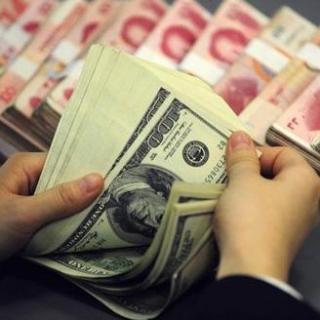
介绍:
Chinese Official Denies Reported Plans for QE Program
Anchor:
A leading official with China's central bank is rebuffing reports suggesting the bank is planning to implement a new quantitative easing program by buying local government debt.
Central Bank Research Bureau Chief Economist Ma Jun says there is no need for the central bank to buy new government debt directly, noting the central bank is also forbidden by law to provide funds directly to local governments.
This has to be done through the Ministry of Finance.
Ma Jun also suggests that the central bank still has a series of monetary and policy tools available to cope with economic downward pressure.
The central bank has been injecting liquidity into the market more aggressively since last year, including a pair of interest rate cuts since November.
For more on China's growth and the idea of a quantative easing program, The Beijing Hour's Paul James earlier spoke with CRI's financial commentator, Cao Can.
…
Back anchor:
That was Cao Can, CRI's financial commentator, speaking with The Beijing Hour's Paul James.
Virtually All Provincial-level Regions Report Q1 Slowdown
A compilation by the China Daily newspaper shows that first quarter GDP growth slowed in 30 provincial-level regions on the Chinese mainland.
Resource producers and heavy industrial bases have been hit hard by sliding producer prices, which have been falling for more than three years.
Northeast China's Liaoning Province experienced the sharpest drop, where growth slumped by 3.9 percentage points to 1.9 percent.
Its year-on-year expansion is also the slowest among all regions.
East China's Zhejiang Province is the only provincial-level region to achieve higher growth in the first quarter.
First quarter GDP growth in Zhejiang accelerated to 8.2 percent from 7.6 percent.
The effect of the slowdown is also evident in local governments' fiscal revenues.
General fiscal revenue at the local level grew just 4.9 percent in the first quarter, the slowest rate since 1994.
Revenue from land sales, a pillar of local governments' income, slumped 36.1 percent.
China to start bank deposit insurance from May
The Chinese government has announced that the country will implement a long-awaited bank deposit insurance scheme in May, taking a key step forward in China's financial reform.
It stipulates that customers will be entitled to compensation of up to 500,000 yuan, almost 82,000 U.S. dollars, should their bank suffer insolvency or bankruptcy.
The reimbursement limit will apply to 99.63 percent of Chinese depositors, and both RMB deposits and foreign currency deposits made by individuals as well as companies are covered.
Several other regulations and laws will also take effect from May.
China's Big Five Banks Report Weak Profit Gains in Q1
China's big five state-owned commercial banks have reported weaker profit growth rates in the first quarter of this year, due to economic slowdown and rising non-performing loans.
The net profits of the five banks grew by less than 2 percent in the first quarter.
The quarterly net profit of the Bank of China grew by less than one percent, far slower growth compared to same period last year's 14.3 percent increase.
The Industrial and Commercial Bank of China, the country's biggest lender by assets, posted a 1.4 percent year-on-year increase in its first-quarter net profits.
This is well below the 6.6 percent increase recorded in the same period last year.
The country's second-largest lender, China Construction Bank reported growth of 1.9 percent in the first quarter.
The Agricultural Bank of China reported net profit growth of 1.3 percent and the Bank of Communications 1.5 percent.
Meanwhile, all five banks saw a slight rise in their non-performing loans ratios in the first quarter of this year.
GM China Recalls Over Dangerous Tailgate Parts
US car maker General Motors is recall 650 Opel Insignia cars on the Chinese mainland over flawed gas-filled tailgate struts which may fall suddenly and cause accidents.
The affected vehicles are all imported models which were manufactured between June 22, 2011 and July 25, 2013.
大家还在听

